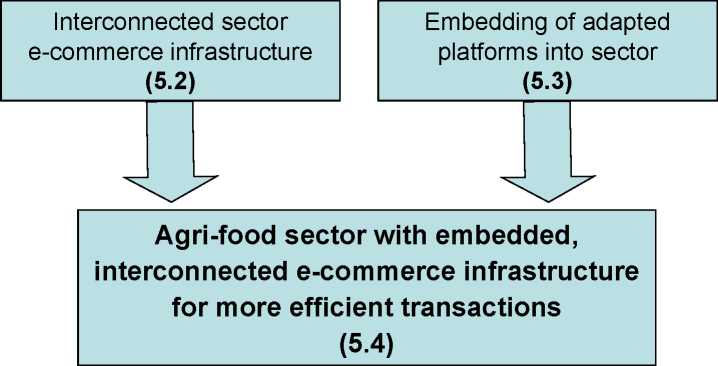M. Fritz, et al. / International Food and Agribusiness Management Review Volume 7, Issue 1, 2004
presented in section 2 (Fritz, Hausen, Schiefer 2003). Table 4 shows the models
with their respective criteria combination in order of importance for the respective
model and discusses strategic advantages that may be associated with each model.
A combined consideration of development strategies and platform models
implementing the different development strategies gives insights into the way
platforms interact with the agri-food sector and allows for an estimation and
projection of middle-term implications for the sector’s organization.
The platform development strategies (section 4) may be classified in two principal
groups (see fig. 4),
■ platform cooperation initiatives and
■ platform improvement initiatives.
DEVELOPMENT
STRATEGY

Large consortia Large consortia All platform models
Neutral verticals Neutral verticals
Followed by
Joint
SECTOR
IMPLICATIONS
Improvement
of trading
functionalities
Expansion
of value-
added
services
Gaining
support by
market
participants
development
(5.2.1)
Sharing
of
trade features
(5.2.2)
CONSEQUENCES

Figure 4: Implications from Trade Platforms on Agri-food Sector Organization
© 2004 International Food and Agribusiness Management Association (IAMA). All rights reserved.
14
More intriguing information
1. The name is absent2. Distribution of aggregate income in Portugal from 1995 to 2000 within a SAM (Social Accounting Matrix) framework. Modeling the household sector
3. The name is absent
4. BARRIERS TO EFFICIENCY AND THE PRIVATIZATION OF TOWNSHIP-VILLAGE ENTERPRISES
5. A Consistent Nonparametric Test for Causality in Quantile
6. The name is absent
7. Achieving the MDGs – A Note
8. Spatial patterns in intermunicipal Danish commuting
9. Input-Output Analysis, Linear Programming and Modified Multipliers
10. The name is absent